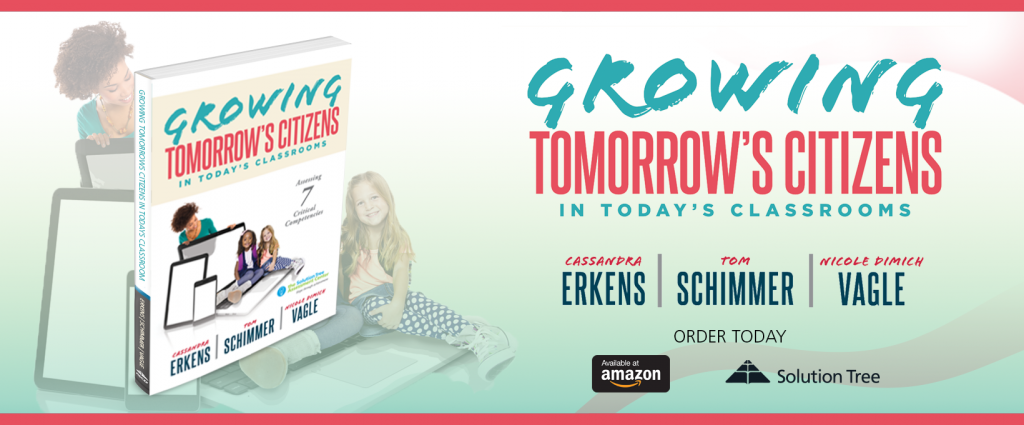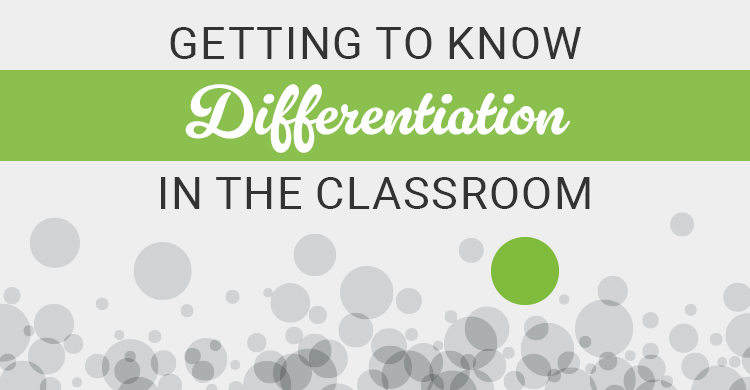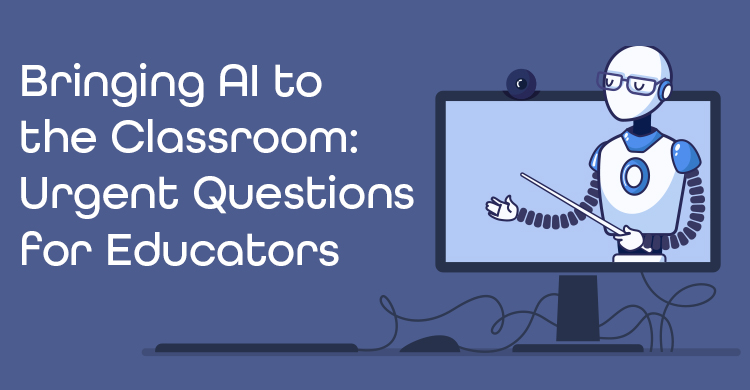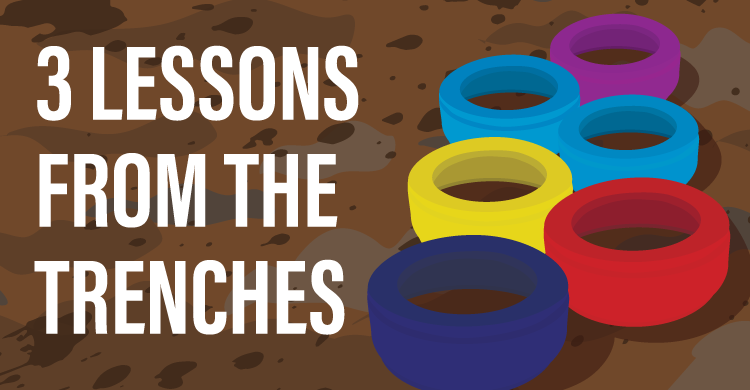[VIDEO] Based on Growing Tomorrow’s Citizens in Today’s Classrooms
Being able to recall the states and capitals, solve routine problems, identify causes of various wars, or name and describe characters in a novel used to be enough—learning content and developing basic reading, writing, and mathematics skills used to be the end goal. Collaboration, critical thinking, communication, self-regulation, and other critical competencies, or 21st century skills, were often the means by which students learned content deemed necessary. Students would collaborate to analyze a character in a novel, talk about the evidence in the text to support their thinking, and then be assessed on identifying and describing characters from the discussion; this is no longer sufficient.
This does not mean content is obsolete. There is still important content for learners to grasp; however, students do not need to memorize it all. Instead, they need to be able to critique it, make sense of it, and use it to creatively develop new ideas and innovations. Content and critical competencies have switched places in role and importance. Content is now the means, while critical competencies are the end.
The Changing Role of Content and Critical Competencies
Our current era, sometimes referenced as the Age of Acceleration, is rapidly changing, and new technologies are emerging every day. Countries’ economies are interdependent (the economic, political, and social health of each country influences other countries’ prosperity) and make up the global economy. A crisis in a country across the globe affects the markets around the world. The speed of the microchip is doubling every two years. Our changing climate patterns and weather intensity are leaving scientists to furiously study and understand the impact on everyday life and local and global environments.
The intersection of these three rapidly changing and dramatic elements (global economic interdependence, climate patterns, and rapid technology innovations) make for a future that is hard to imagine. Students will need critical competencies to navigate and thrive in the future.
Assessment plays a critical role in ensuring students gain critical competencies, not just content. What gets assessed is what defines the expectations for students and what teachers ensure students learn. If we engage students in collaboration but assess content, we have sent the message that content is more important than collaboration. In a study of what organizations and businesses want students coming to them, collaboration and critical thinking top the list (Casner-Lotto & Barrington, 2006; Wileman et al., 2012). This means our assessment practices will need to shift. Content is still important, but its place (and how we use it) has shifted.
- Students will still grapple with states and capitals, but now the end is comparing and contrasting various issues such as weather or taxes in different states and how that affects how people live, because names of states and capitals are easily accessible through technology.
- Students will explore the causes of war, but now the end is more about the critical thinking—analyzing multiple perspectives and interpretations of war and tracing the impact and influence of those causes on how we handle and engage in war today. Learners need to be able to clearly communicate ideas through dialogue supported by credible arguments and sources.
- Students will need to solve routine problems, but in the context of problems that have multiple solutions and ways of representing authentic situations.
- Students will still name and describe characters in novels, but now they will need to be able to compare and contrast various characters and consider the historical and political influences of the time, because the goal is to have them think on a more sophisticated level.
Learners are digging into content to critically analyze the source and meaning of the content, instead of learning the content in and of itself. They are collaborating to listen and learn, to creatively put ideas together, and to gather perspectives from those with whom they are collaborating. They are collaborating around content—but the end is to learn how to collaborate and seek perspectives, interrogate ideas in a constructive way—not to take a test to see if they can recall that information. The skill is in the process. This type of assessment requires different methods of assessment.
New Methods of Assessment
Assessment, at its core, is about gathering evidence of learning. There are five types of methods that are best used to measure critical competencies. Growing Tomorrow’s Citizens in Today’s Classrooms provides criteria, rubrics, and tools for each competency, including models for assessment.
Authentic Tasks
Authentic tasks “make learners think like those in a specific discipline, synthesize several interrelated aspects of that discipline and intentionally connect the critical competencies” (Erkens, Schimmer & Vagle, 2019, p. 26). Authentic tasks can be short, medium, or long in duration, but they all include contexts that emulate reality and often emerge directly from the discipline or industry.
Performance Assessments
Performance assessments ask students to develop products (such as websites, blogs, videos, and more) or presentations in authentic contexts of the discipline, often combining more than one critical competency. These products and presentations are sometimes delivered to an audience outside teachers and peers. Performance tasks often build on authentic tasks.
Observations
In order to accurately understand how students are progressing in achieving critical competencies, teacher observations are key. As individual teachers and teams develop criteria for each competency, these become the observations or look for, document, provide feedback, and determine a level of proficiency. Each chapter provides a set of criteria and accompanying rubrics as a starting place for teachers and teams to develop criteria.
Self-Assessment
As teachers engage students in learning about critical competencies, they are co-constructing criteria so students understand what quality “collaboration” or “creative problem-solving” looks like. As students engage in learning about and practicing critical competencies, they self-assess, using evidence in the process.
Peer Assessment
When students understand the qualities of developing critical competencies, they will be able to more accurately provide reflection on their peers’ skills. Peer assessment should never be used as a standalone piece of evidence.
To gain a clear and accurate picture of student progress (for both the learner and the teacher) on achieving these critical competencies, a variety of methods is needed to ensure valid and reliable information.
A New Vision for Assessing Critical Competencies
Growing Tomorrow’s Citizens in Today’s Classrooms describes seven critical competencies necessary to begin transforming our classroom assessment practices. While the seven competencies are interdependent in many ways, our book provides tools and templates to guide teachers’ design and use of assessment evidence. Individuals, teams, and systems develop the following critical competencies:
| Self-Regulation | Setting goals, monitoring progress, and reflecting on one’s results and motivation is the process of self-regulation. Learners engage in the process to consider questions such as: What helps me persist? What shuts me down? What does my assessment evidence tell me about my progress? These prompts are part of the cycle of self-regulation. |
| Critical Thinking | To think critically, to analyze, evaluate, and synthesize ideas and information; to understand issues, concepts, and other phenomena |
| Collaboration | To work together to communicate and apply information and creatively solve problems to develop innovative solutions to the world’s most pressing challenges |
| Creative Thinking | To put unique, competing, and unrelated ideas together to generate new and more innovative solutions |
| Communication | To develop the ability to communicate digitally, verbally, and in written forms |
| Digital Citizenship | To become digital citizens who understand how to ethically, productively, and proactively conduct themselves online. Digital citizens are globally competent and understand the etiquette of communicating with different individuals and groups in a variety of online venues. |
| Social Competence | To be socially aware and learn how to use critical competencies to contribute solutions to the larger issues plaguing local and global communities |
Assessing critical competencies requires methods that reach far beyond the traditional paper-and-pencil test. Observation, self-assessment, peer assessment, authentic assessment, and performance assessment are key methods to ensure students achieve these essential skills.
Making Time in an Overcrowded School Day
We need to make time for this new vision of assessment that will better serve our students, our communities, and our economy. Time is one of the biggest challenges and barriers. This means we must find more efficient ways to teach and assess content, so students can get to the deeper learning. Students must spend time looking at and interrogating the relevance and importance of this content—not spend time memorizing content for a 100-point multiple-choice test that, in and of itself, has serious error issues. There are far too many reasons students get items wrong, other than not knowing the information. Once rubrics and criteria for the critical competencies are developed and agreed upon, these tools can be used with multiple projects and tasks; they are competency rich but task neutral.
A Future Full of Hope
“The greatest tool we have for tackling our grand challenges is the passionate and dedicated human mind. The information and communications revolution now underway is rapidly spreading across the planet … over the next six years, three billion new individuals will be coming online, joining the global conversation, and contributing to the global economy. Their ideas—ideas we’ve never before had access to—will result in new discoveries, products, and inventions that will benefit us all” (Diamandis & Kotler, 2014, p. xi).
Students will need a drastically different set of skills to keep up with this innovation and communication. There was a time when learning content was the goal (end) and the critical competencies or skills were the means. For students to thrive in this new reality, the end must be critical competencies and the means is content alongside. Growing Tomorrow’s Citizens in Today’s Classrooms provides school and teachers direction in taking their next steps in this new way of assessing, ensuring students will leave with the skills and competencies necessary to thrive in a complex, interdependent, and ever-evolving world.
References:
Casner-Lotto, J. & Barrington, L. (2006). Are they really ready to work? Employers’ perspectives on the basic knowledge and applied skills of new entrants to the 21st century U.S. workforce. New York: Conference Board.
Diamandis, P. H. & Kotler, S. (2014). Abundance: The future is better than you think. New York: Free Press.
Erkens, C., Schimmer, T., Vagle, N. D. (2019). Growing tomorrow’s citizens in today’s classrooms: Assessing 7 critical competencies. Bloomington, IN, Solution Tree Press.
Wildman, J. L., Thayer, A. L., Pavlas, D., Salas, E., Stewart, J. E., & Howse, W. R. (2012). “Team knowledge research: Emerging trends and critical needs.” Human Factors 54(1), 84–111.
[author_bio id=”301″][author_bio id=”68″][author_bio id=”398″]







